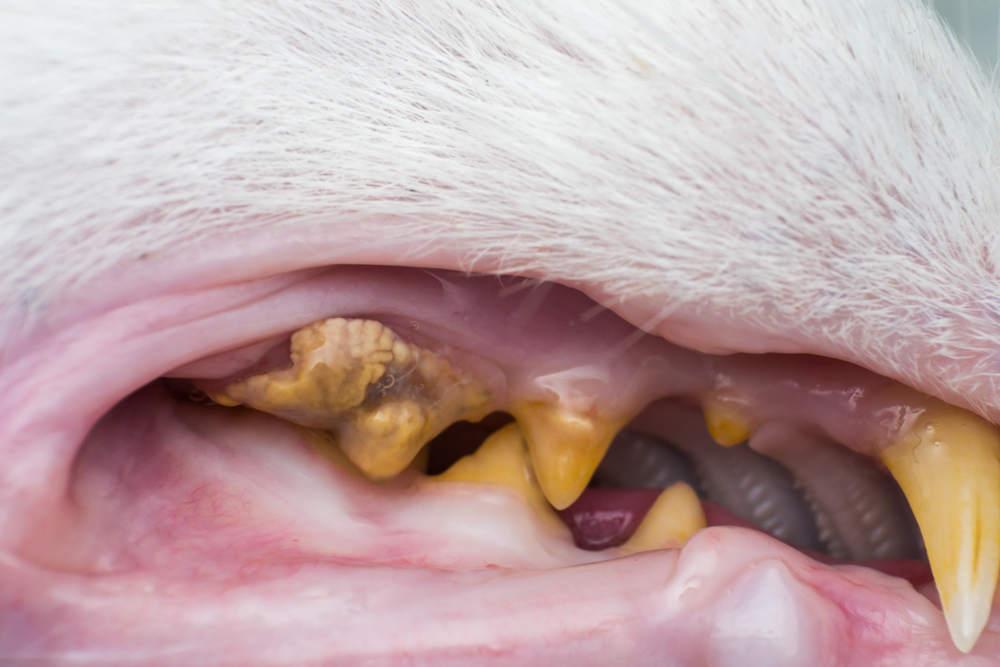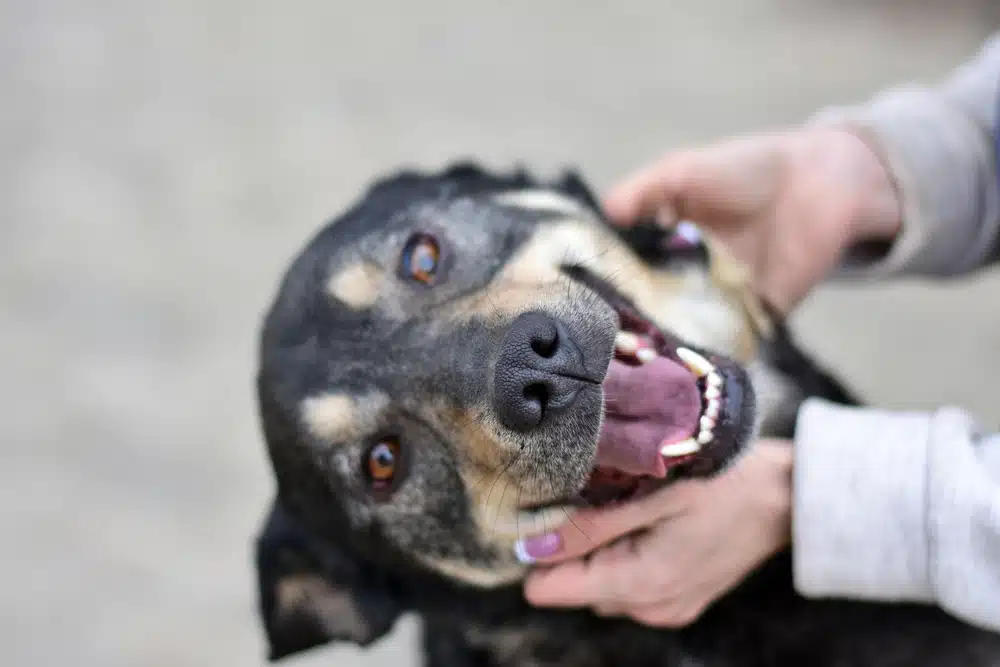Keeping your teeth healthy is hard work—after all, most people brush their teeth twice daily, floss, use rinses, and visit the dentist for professional cleanings twice per year—yet many people still suffer from dental issues like cavities or gum recession. The same is true for pets, who need a consistent oral home-care regimen, combined with professional cleanings, to prevent painful dental disease. February is National Pet Dental Health Month, the perfect time for the Animal Hospital of Parkland team to share pet dental health facts to increase pet owner awareness of their furry pal’s dental needs.
#1: Pet dental disease is extremely common
The majority of dogs and cats have dental disease signs by 3 years old, and incidence increases with age. Dental disease (i.e., periodontal disease) results from bacteria and plaque that build up on the teeth and harden into tartar. These deposits push the gum line down and away from teeth, where bacteria can enter and destroy the gums, jaw bone, tooth attachments, and tooth roots. The end result is chronic pain, loose teeth, and a shift from beneficial to harmful mouth bacteria.
#2: Small dogs and brachycephalic breeds are at highest risk
Small- and toy-breed dogs, along with short-nosed (i.e., brachycephalic) breeds, have crowded teeth and abnormal bites, which predispose them to faster tartar buildup and dental disease than larger breeds and those with neutral head shapes.
#3: Cats experience dental disease differently than dogs
Cats are unique creatures, with unique dental diseases. While cats may suffer from typical periodontal disease like dogs, they are also prone to several other conditions that can occur at any age, with or without concurrent periodontal disease, including:
- Feline odontoclastic resorptive lesions (FORLs) — This condition is often symmetrical, eventually affecting the same teeth on each side of a cat’s mouth. For unknown reasons, the cat’s body begins to dissolve and resorb the tooth from the inside out. Treatment is extraction or crown amputation.
- Stomatitis — This inflammatory condition, which results in red, swollen, ulcerated gums and oral tissues, may result from acute or chronic viral infection, or occur for unknown reasons (i.e., idiopathic). Treatment involves immune suppressive, anti-inflammatory, and antibiotic medications, along with strategic tooth extractions.
#4: Proper home care can prevent or slow dental disease
Daily toothbrushing most effectively delays onset or slows progression of dental disease. Starting when pets are young is ideal, but adult pets can learn to accept toothbrushing when you commit to a slow, positive acclimation process. Don’t brush your pet’s teeth if they have severely inflamed gums or loose teeth, which can be painful. Other dental products, including prescription diets, treats, chews, water additives, wipes, sprays, and gels, may be effective for pets who will not accept brushing, or as an adjunctive method.
#5: Some dental products are more effective than others
If you choose to use dental products other than pet-safe toothpaste, ask your veterinarian for recommendations first. Most products on the market are safe, but the majority have not been properly tested and are not proven to be effective. Your veterinarian can recommend products that work best for your pet’s temperament and disease severity, or you can check out the Veterinary Oral Health Council’s (VOHC) list of accepted products.
#6: Good home care does not eliminate the need for professional cleanings
Most pet owners provide inconsistent oral care, but pets who do receive daily care still need periodic professional dental cleanings to remove bacteria, plaque, and tartar below the gum line and address abnormalities early. Our hospital recommends all pets receive yearly cleanings that our veterinary team performs while your pet is anesthetized for their safety.
#7: Most dental disease is “invisible”
All pets should visit the veterinarian annually for a wellness examination that includes a thorough oral exam, which allows our team to detect some dental disease. However, the fact is that most disease starts below the gum line, where problems are invisible on a regular exam. One study showed that 27% of dogs and 41% of cats with normal-looking teeth had hidden disease detected on X-ray, which we can perform only while your pet is anesthetized.
#8: Non-anesthesia dentistry is dangerous
Services that claim to clean your pet’s teeth while they are awake may seem like a steal compared to the cost of an anesthetized cleaning, but these services are ineffective and dangerous. Dentistry requires your pet to hold completely still while sharp instruments are used inside their mouth, which is impossible and extremely stressful for an awake pet.
#9: Untreated dental disease impacts quality of life and longevity

Left untreated, dental disease leads to chronic pain and decreased quality of life for your pet. Annual dental examinations and yearly professional cleanings are important to detect potential disease and pain early. Over time, severe bacterial infections in the mouth can spread through the bloodstream and damage your pet’s heart, liver, lungs, or kidneys, effectively shortening their life.
The Animal Hospital of Parkland team is your best resource to help you develop and maintain an individualized, effective oral health plan for your pet. Schedule a dental consultation or professional dental cleaning, or with any questions about your pet’s oral health care needs.

